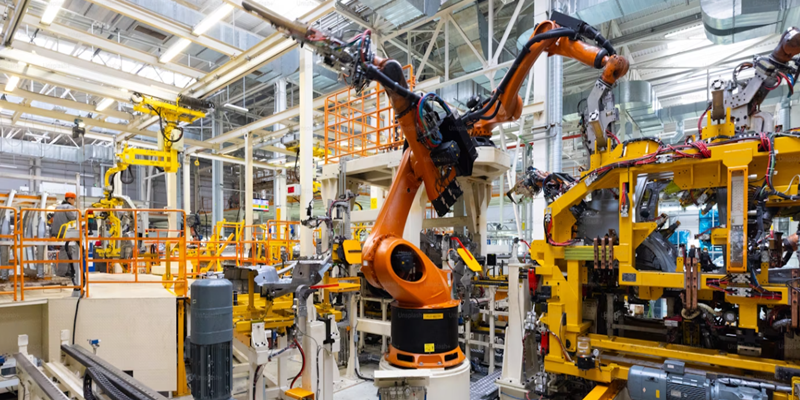You might not think about it often, but the real magic of a robot isn’t just in its gears or circuits; rather, it’s in what it can do at the end of its arm. End-of-arm tooling (EOAT) is where the action happens, turning robots from mere machines into versatile problem-solvers. Whether it’s precisely placing a microchip or welding a car frame, end of arm tooling for robots is the unsung hero that gets the job done. Below is an exploration of five essential types of EOAT devices, each tailored for specific applications that enhance robotic efficiency.
1. Grippers
Grippers are among the most versatile and widely used EOAT devices. These tools function similarly to a human hand, allowing robots to grasp, hold, and manipulate objects of varying shapes and sizes. Grippers come in several types, each suited to different industrial needs. Mechanical grippers, for instance, use fingers or claws to secure objects, making them ideal for tasks that require a strong, controlled grip, such as in automotive manufacturing, where handling heavy components with precision is essential.
Pneumatic grippers, on the other hand, operate using compressed air to open and close the gripping mechanism. They are generally faster and lighter than mechanical grippers, making them ideal for high-speed manufacturing environments. To ensure optimal performance and maintain a clean, contaminant-free operation in sensitive applications such as food processing, pharmaceuticals, and electronics manufacturing, many modern facilities use oil-less air compressor technology with their pneumatic grippers. Vacuum grippers, on the other hand, rely on suction rather than fingers to lift and move objects. This is particularly useful for handling flat, smooth items like glass panels or electronic components.
2. Vacuum Cups
Vacuum cups, a specific type of vacuum gripper, are designed for lifting and transporting flat, non-porous objects. These EOAT devices operate by creating a vacuum seal between the cup and the object, allowing the robot to securely grip and move items. Vacuum cups are especially effective in industries where the integrity of the material is crucial. For instance, in the glass manufacturing industry, vacuum cups are used to handle large sheets of glass without leaving marks or causing damage.
In electronics manufacturing, vacuum cups are widely employed to pick up and place components onto circuit boards, where precision and gentle handling are critical. They are also used in metalworking to lift large metal sheets, ensuring they are transported between production stages without bending or warping. The primary advantage of vacuum cups lies in their ability to handle items of various sizes and shapes with minimal risk of damage, making them invaluable in industries where maintaining the condition of the material is essential.
3. Cutting Tools
Cutting tools are essential EOAT devices used in various industrial applications to cut, shape, or trim materials with precision and efficiency. These tools are commonly attached to robotic arms in manufacturing processes like automotive, aerospace, and metal fabrication. There are different types of cutting tools, each designed for specific materials and tasks.
- Laser cutters utilize focused laser beams to cut through materials like metals, plastics, or textiles with extreme accuracy. These tools are favored for their precision and ability to produce clean edges without physical contact.
- Water jet cutters use high-pressure streams of water, often mixed with abrasives, to cut through hard materials such as metal, stone, and glass. They are known for being versatile and for preserving material integrity since they don’t produce heat.
- Plasma cutters are employed for cutting electrically conductive materials such as steel, stainless steel, and aluminum. The plasma cutting process generates an extremely hot and focused plasma arc to melt and cut through the material.
Cutting EOATs enable automated systems to carry out tasks that demand high precision, speed, and safety, improving production efficiency and reducing manual labor. They are key to ensuring consistent quality in large-scale manufacturing operations.
4. Welders
Welders are industrial IoT devices that play a major role in the automotive manufacturing and construction industries. These devices perform various types of welding, including spot welding, arc welding, and laser welding, each suited to different applications. Spot welding, for example, is commonly used in automotive assembly to join metal sheets at specific points quickly and efficiently, making it ideal for mass production.
Arc welding uses an electric arc to melt and fuse materials, often employed in heavy-duty applications where strong, durable bonds are required, such as metal frameworks. Laser welding offers precision and control, making it suitable for applications that demand clean, accurate welds, such as in the aerospace and electronics industries.
Conclusion
IoT devices, ranging from hardware to robots and computer software, are revolutionizing the way large factories and assembly lines work. From detecting obstacles, preventing accidents, and reducing human errors, end or arm tooling is becoming an integral part of industrial automation.

